How to Preset Information in Youtube Upload
How to Upload Your Videos to Social Media Using Adobe Media Encoder
With Adobe Media Encoder, y'all can seamlessly upload videos to Facebook, Twitter, YouTube, and more.

When your video is prepare for encoding, you lot've probably already decided where you want to share it—perhaps on your website or social media channels.
Having to open a social media platform to upload your video isn't a difficult step, but it tin be bypassed using the publishing options in Adobe Media Encoder.
Here's how to use Adobe Media Encoder to easily upload your videos to some of the about popular social media platforms.
How to Upload Your Videos to Facebook
Facebook is a great platform to share your video projects with friends and the world. It is important to note Adobe Media Encoder direct publishing merely works for Facebook Pages, and will not work for your personal account.
To set up automated uploading to Facebook in Adobe Media Encoder, you will need your projection file and Facebook credentials, as yous will need to authorize Media Encoder to access your account. In one case you have your projection gear up for encoding, follow these piece of cake steps:
- Load your project into the Media Encoder queue.
- Select a Facebook Preset from the Preset dropdown listing.
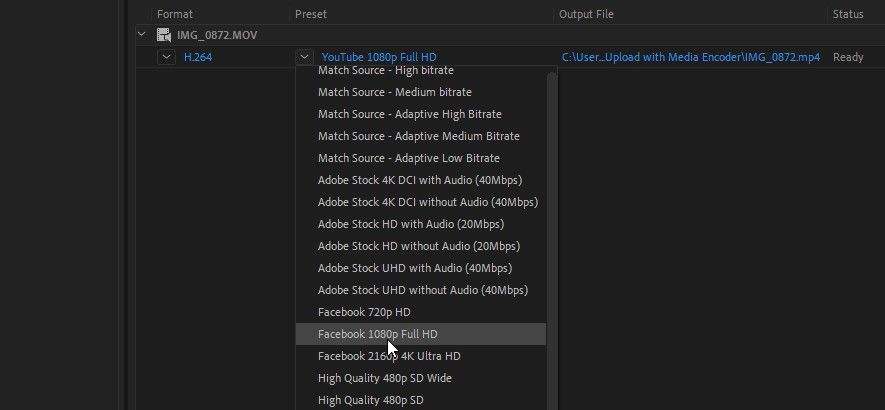
- Click the blue format name, and select the Publish tab.
- Select the Facebook checkbox.
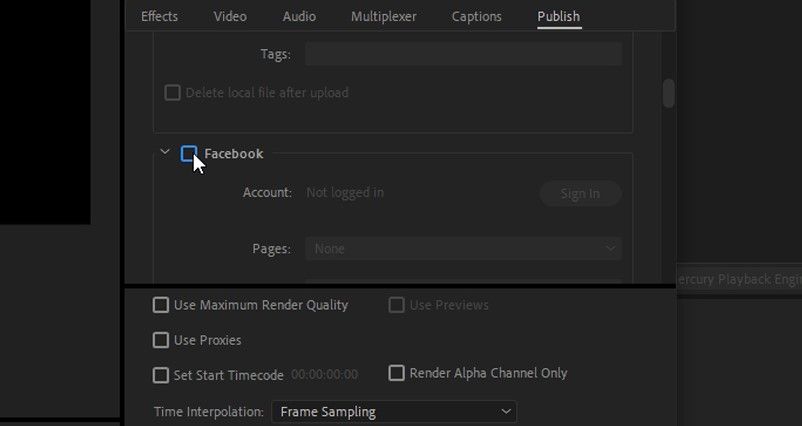
- You will now need to requite Media Encoder permission to access your Facebook business relationship by clicking the Sign In button.
- Sign in with your Facebook account in the next window.
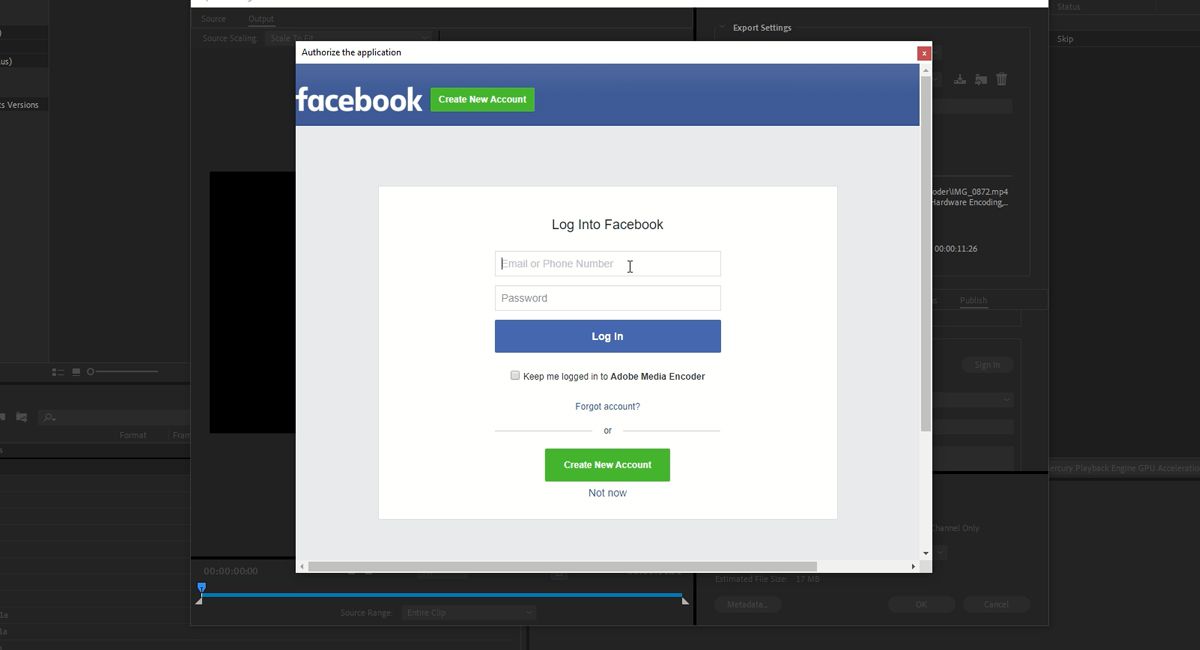
- If you accept two-factor hallmark set upward on your Facebook account, you will exist prompted to enter a six-digit login code.
- Once authorized, select which business relationship (if you take multiple accounts) you wish to connect to Adobe Media Encoder.
- If yous have several Facebook pages you lot manage, you can select the page yous want Media Encoder to upload to.
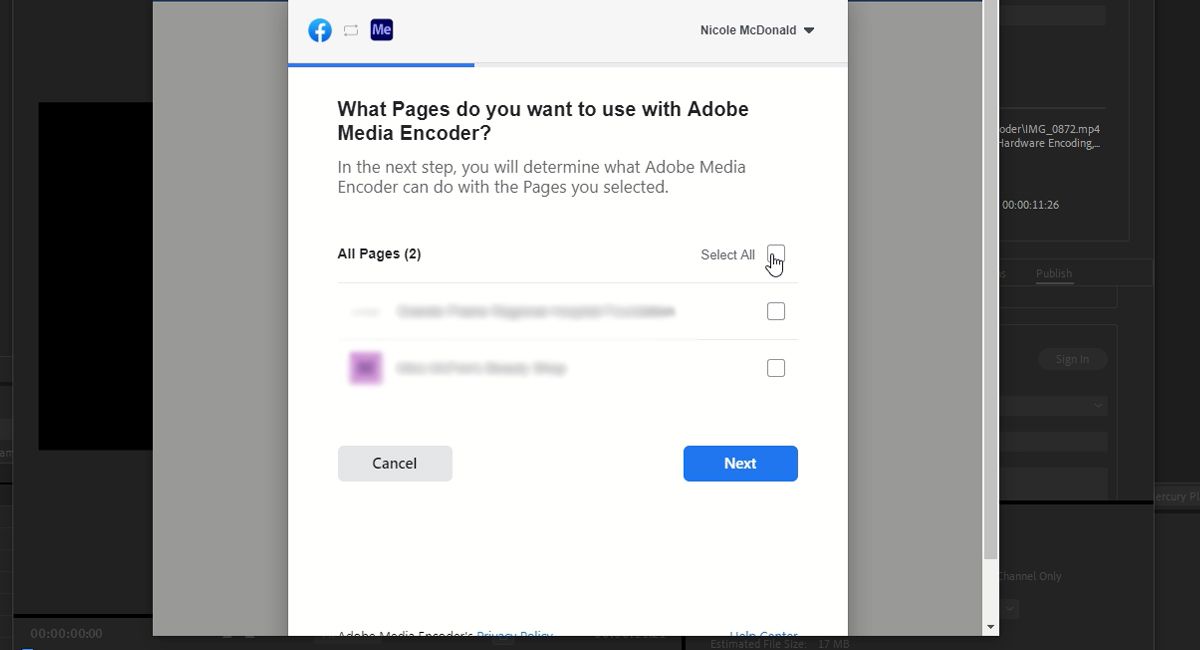
- Select Next, and choose theCreate and manage content on your Page option. Select Done.
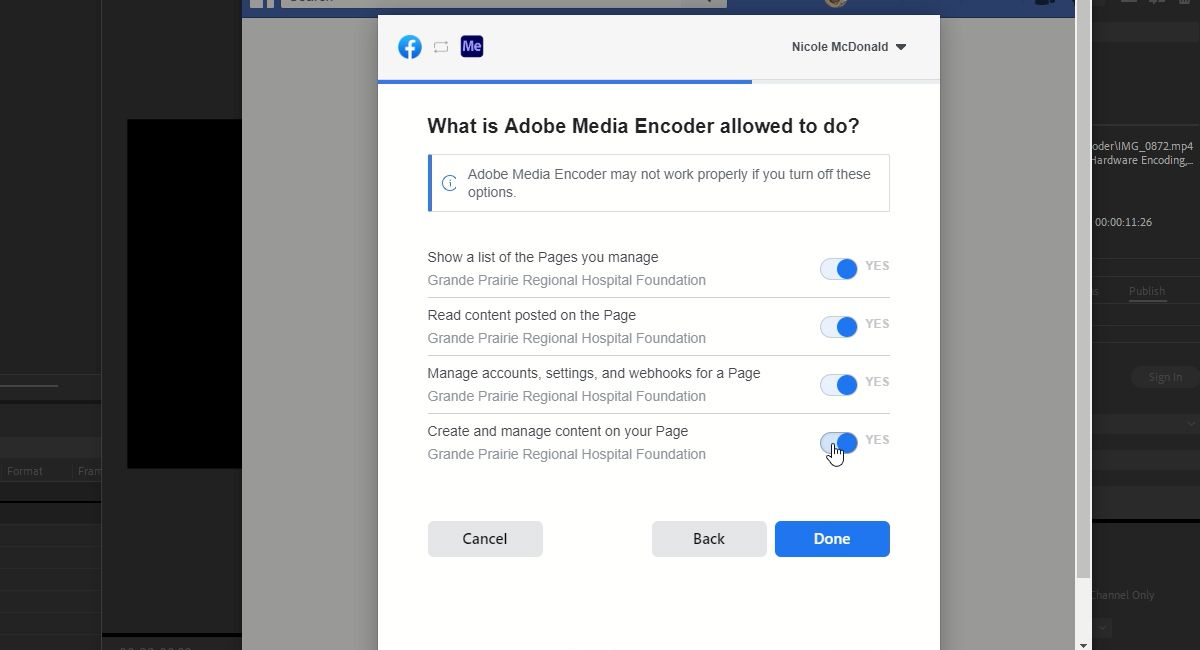
- Yous will receive a popup notification once your Facebook account is linked to Adobe Media Encoder. Select OK.
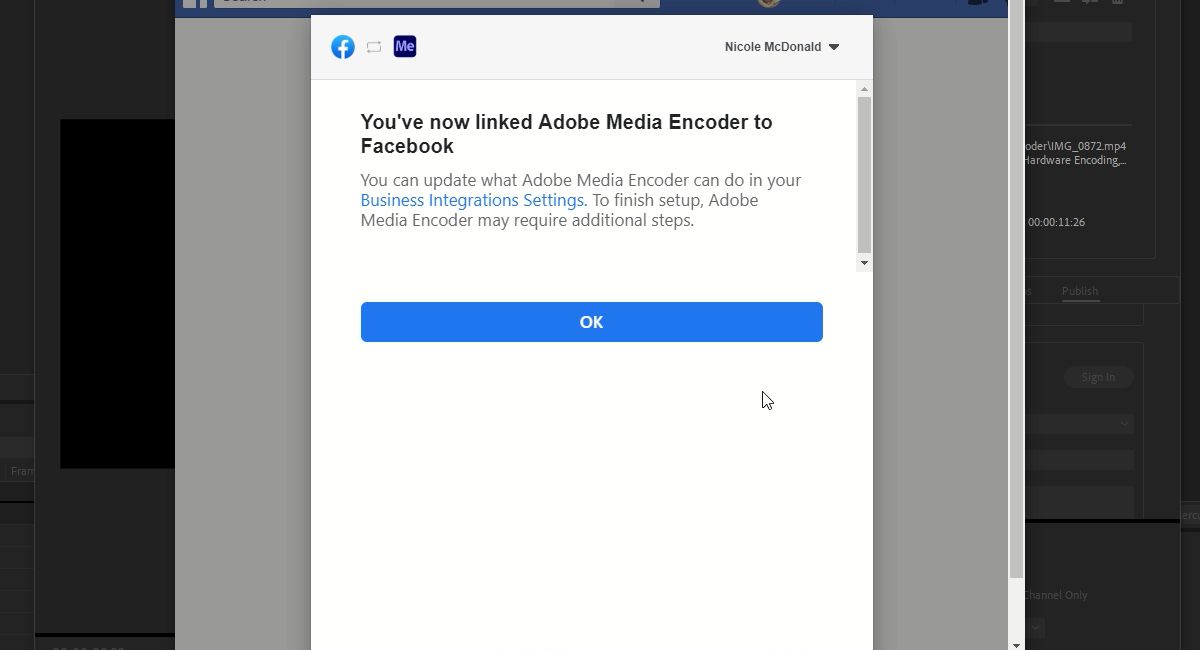
- In the Media Encoder Export Settings window, enter your project's championship and description as you wish information technology to appear on Facebook.
- Should yous wish to save room on your hard drive, you can select Delete local file subsequently upload.
- Select OK to save your export settings.
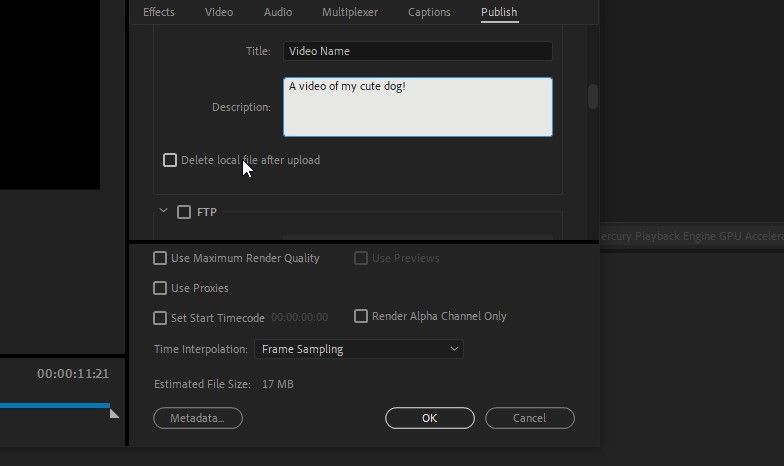
- When ready, you tin can select the green Export button to encode and upload your projection.
How to Upload Your Videos to Twitter
If you want to kickoff a real-time chat with your video, Twitter is a great platform to employ. Setting upwardly automated uploading to Twitter in Adobe Media Encoder volition relieve yous a few extra steps in your projection.
For this setup, you will demand your project file and Twitter credentials, every bit you will need to authorize Media Encoder to access your Twitter business relationship. Once you lot are prepare to share your video project with the world, just follow these steps to get your message out there:
- Load your project into the Media Encoder queue.
- Select a Twitter Preset from the Preset dropdown listing.
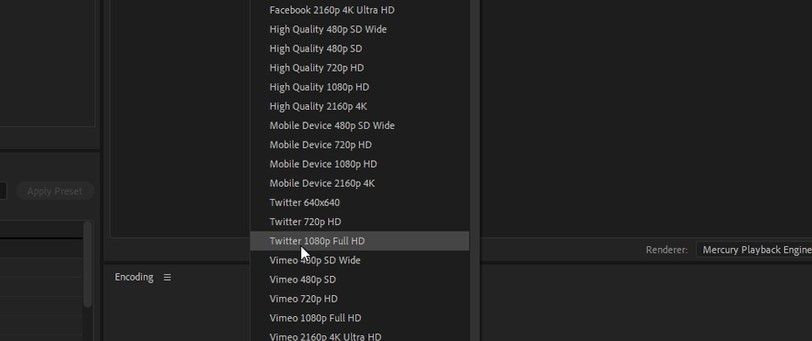
- Click the blueish format proper name.
- Click the Publish tab, and select theTwitter checkbox.
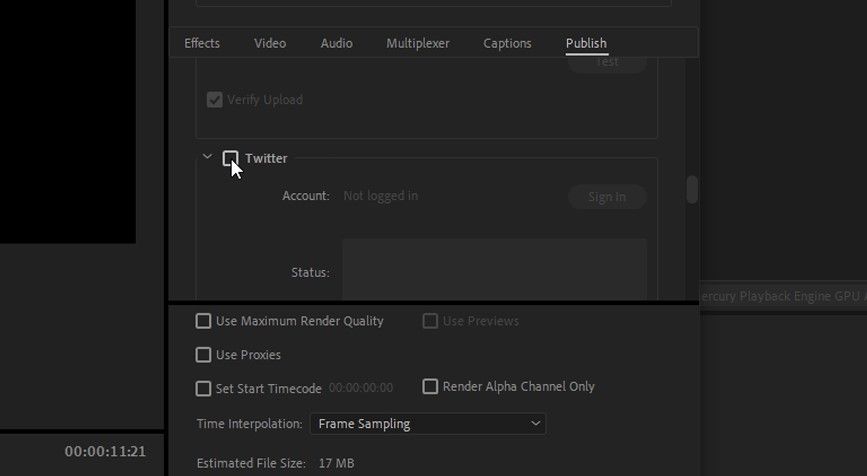
- You volition now demand to give Media Encoder permission to admission your Twitter account past clicking the Sign In button.
- Sign in with your Twitter account in the next window.
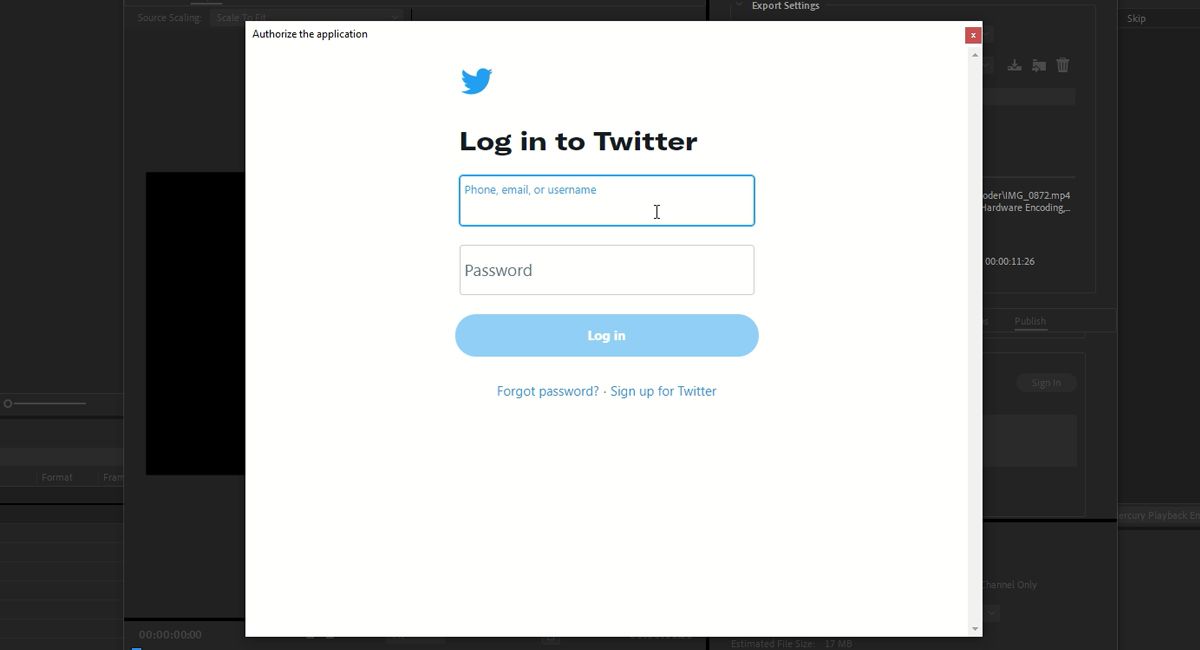
- SelectAuthorize app in the post-obit popup window to give Media Encoder admission to your account.
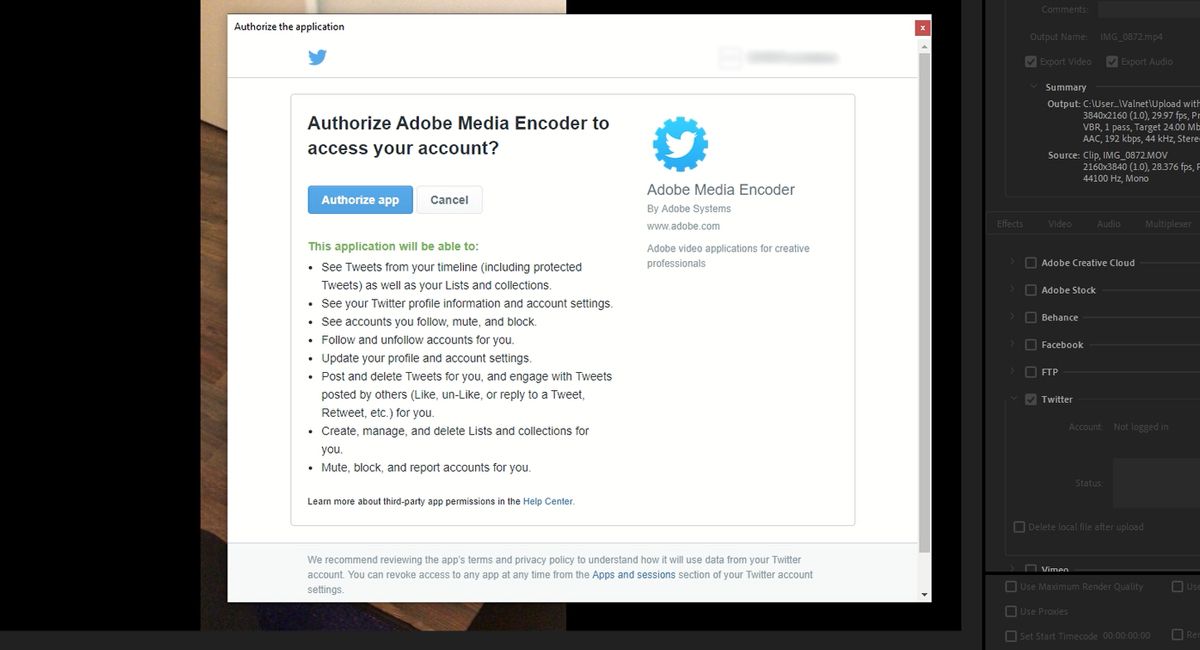
- Select Washed.
- In the Media Encoder Export Settings window, enter the status you wish to postal service your video with.
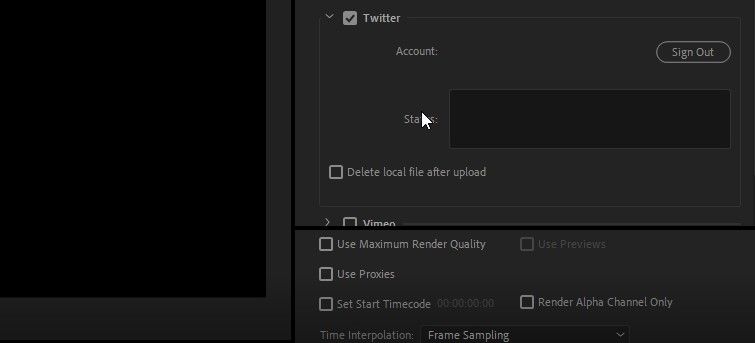
- Should you wish to salve room on your hard drive, you can select Delete local file later on upload.
- Select OK to save your export settings.
- When ready, you tin can select the green Export button to encode and upload your project.
How to Upload Your Videos to YouTube
With YouTube's big audience and impressive usage statistics, information technology's a corking platform to share your videos. It is easy to set Media Encoder to automatically upload your projects by following these steps:
- Load your projection into the Media Encoder queue.
- Select a YouTube Preset from the Preset dropdown list.
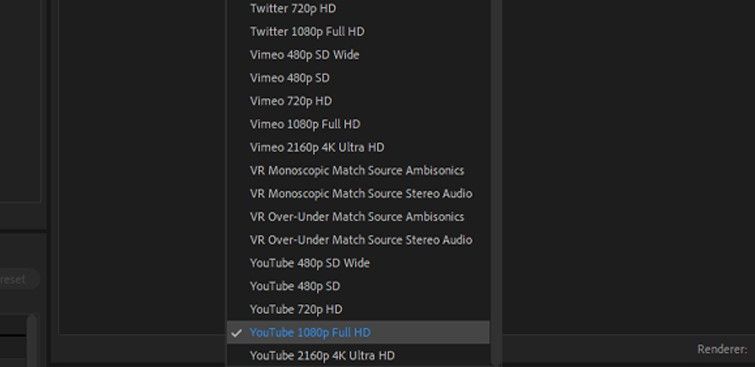
- Click the blue format proper name.
- Select the Publish tab, and choose the YouTube checkbox.
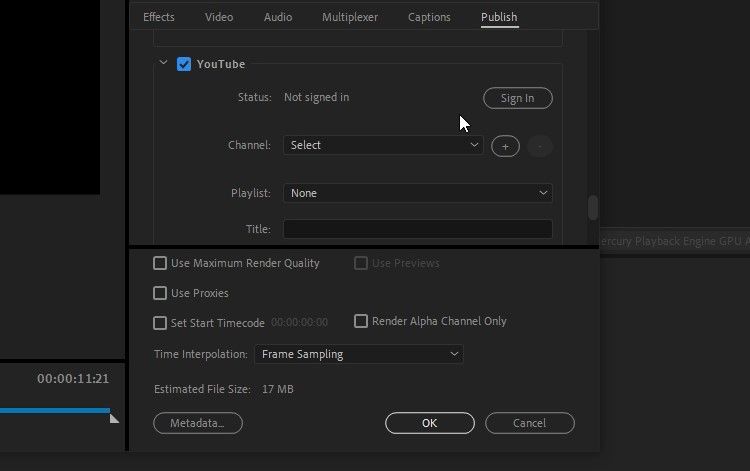
- You will now need to requite Media Encoder permission to access your YouTube account by clicking the Sign In button.
- Sign in with your YouTube account in the adjacent window.
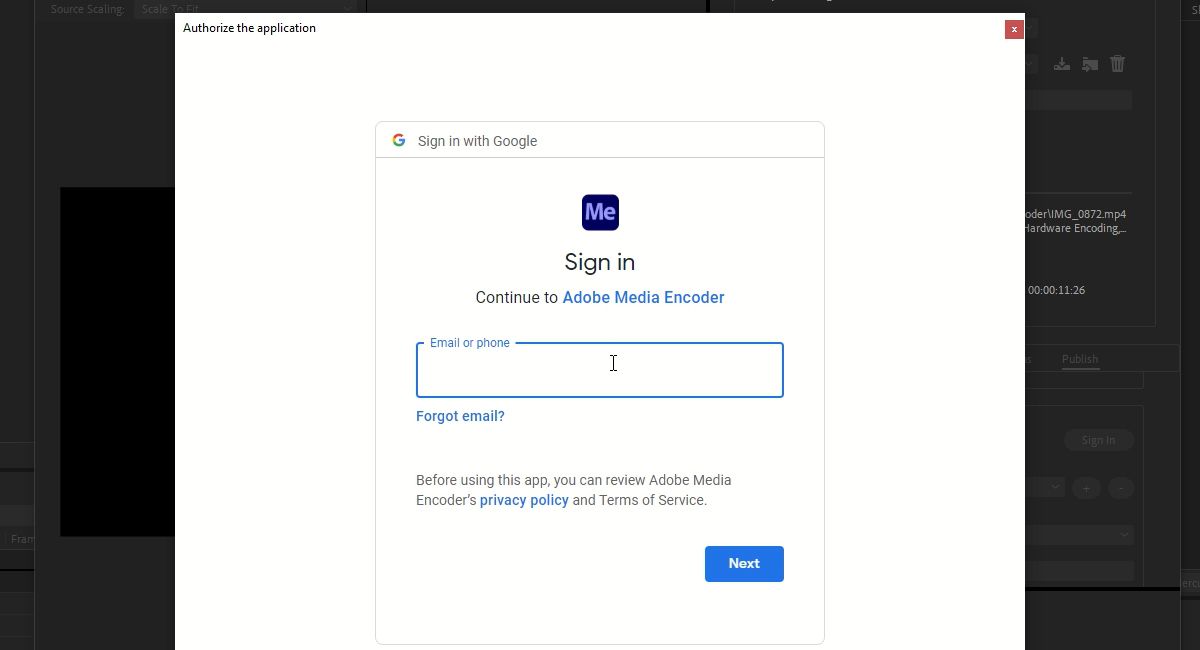
- Select Done.
- Select Permit in the following permissions window.
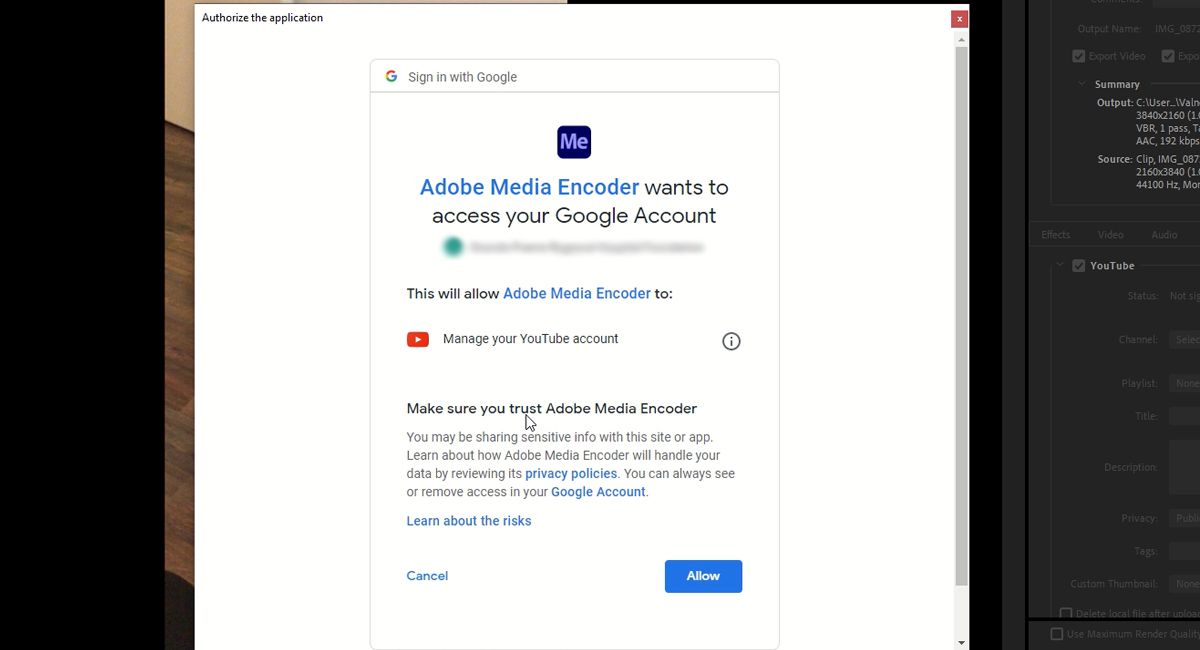
- In the Media Encoder Export Settings window, select which of your YouTube channels and playlists you lot wish to upload your video to.
- Enter the title and description for your video.
- Select the Privacy level you lot wish to prepare, and enter any Tags you wish to use.
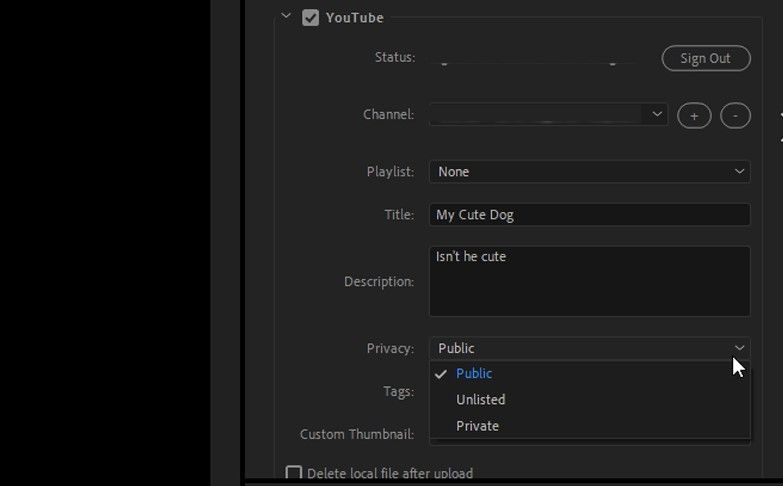
- Select a Custom Thumbnail from the source video, or you can upload 1 you lot've already created.
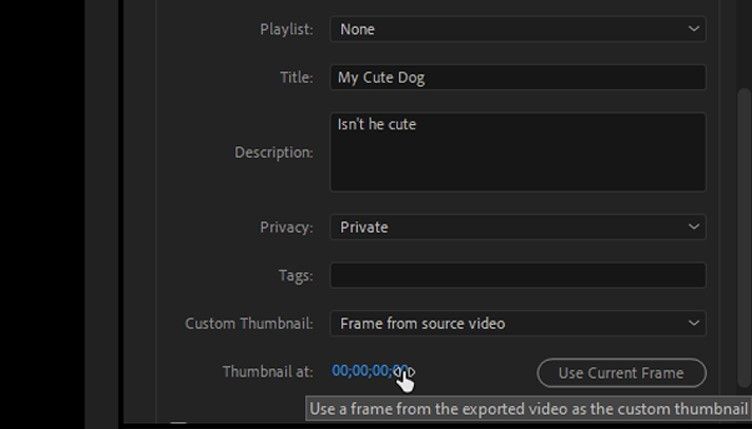
- To save room on your hard bulldoze, y'all can selectDelete local file subsequently upload.
- Select OK to salvage your export settings.
- When ready, you tin can select the green Export button to encode and upload your projection.
How to Upload Your Videos to Vimeo
Although YouTube is the meridian platform for video hosting and sharing, Vimeo does offer some advantages for video producers, including better encoding and video quality. To upload your projects directly to Vimeo, follow these simple steps:
- Load your project into the Media Encoder queue.
- Select a Vimeo Preset from the Preset dropdown list.

- Click the blue format proper noun.
- Select the Publish tab, and choose the Vimeo checkbox.
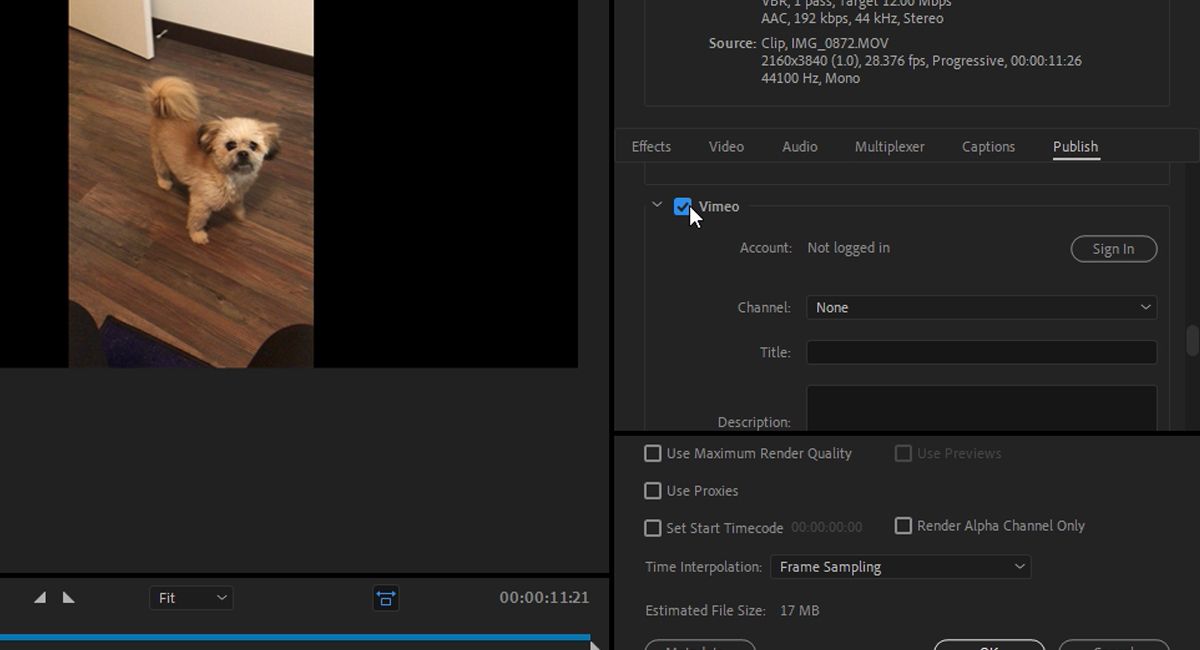
- You lot will at present need to give Media Encoder permission to access your Vimeo account by clicking the Sign In button.
- Sign in with your Vimeo business relationship in the next window.
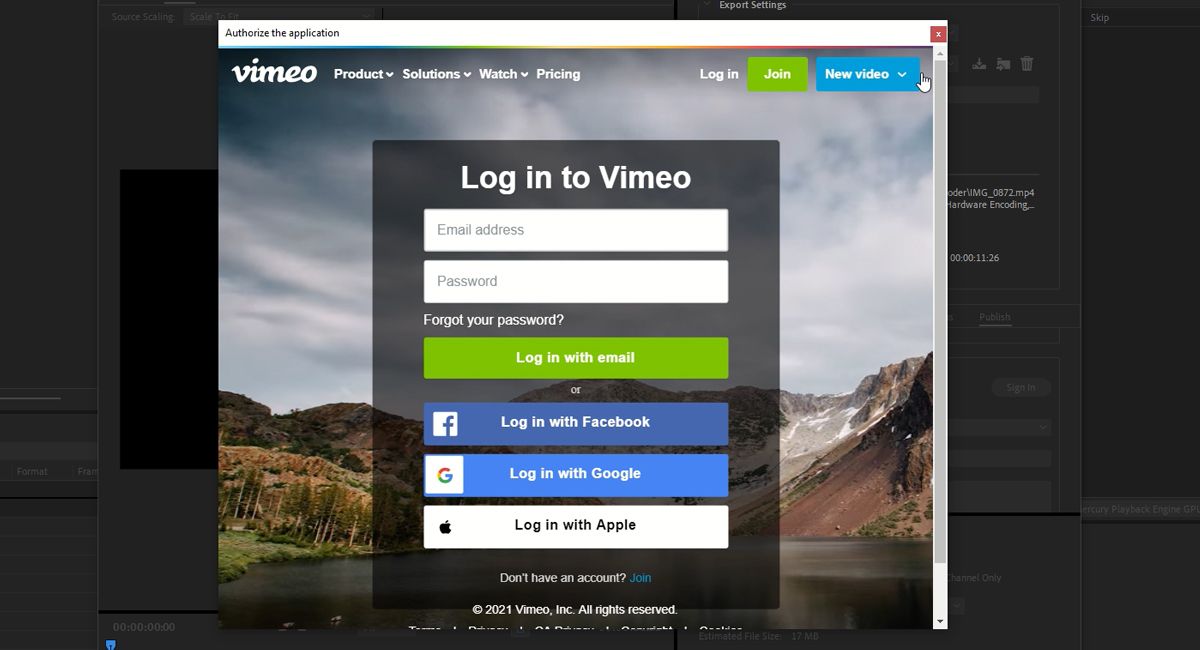
- Select Done.
- Select your preferred permission levels in the following popup window.
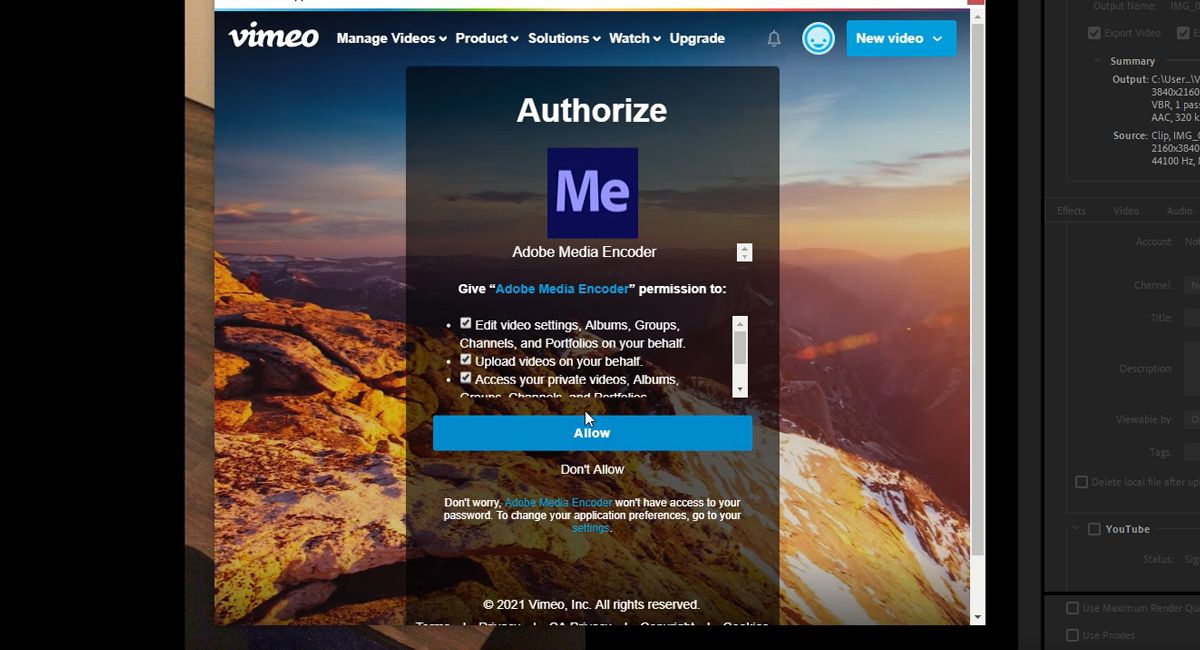
- In the Media Encoder Export Settings window, select which of your Vimeo channels yous wish to upload your video to.
- Enter your video'south title and description.
- Select who your projection will exist Viewable by, and enter any Tags y'all wish to use.
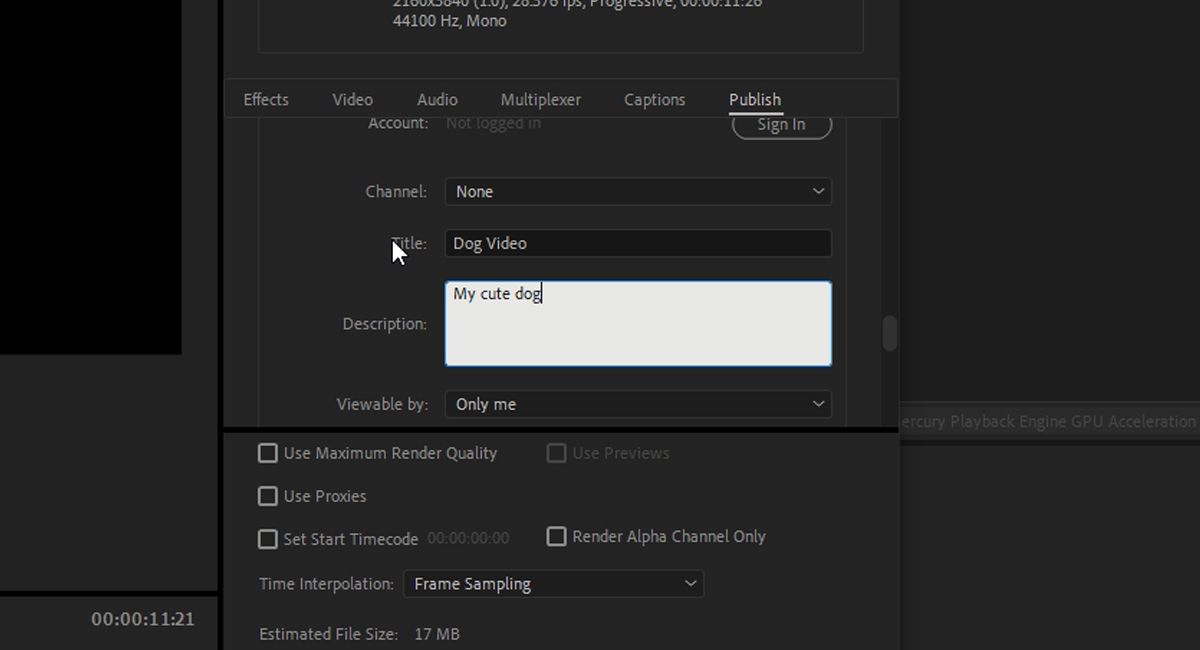
- To save room on your difficult drive, you tin can select Delete local file later on upload.
- Select OK to save your export settings.
- When set, yous can select the green Export push to encode and upload your project.
How to Save Your Preset
If these settings are ones you lot want to use over and over again, you can easily salvage them as a Preset using the following steps:
- Select the Salvage Preset icon institute side by side to the Preset dropdown list.
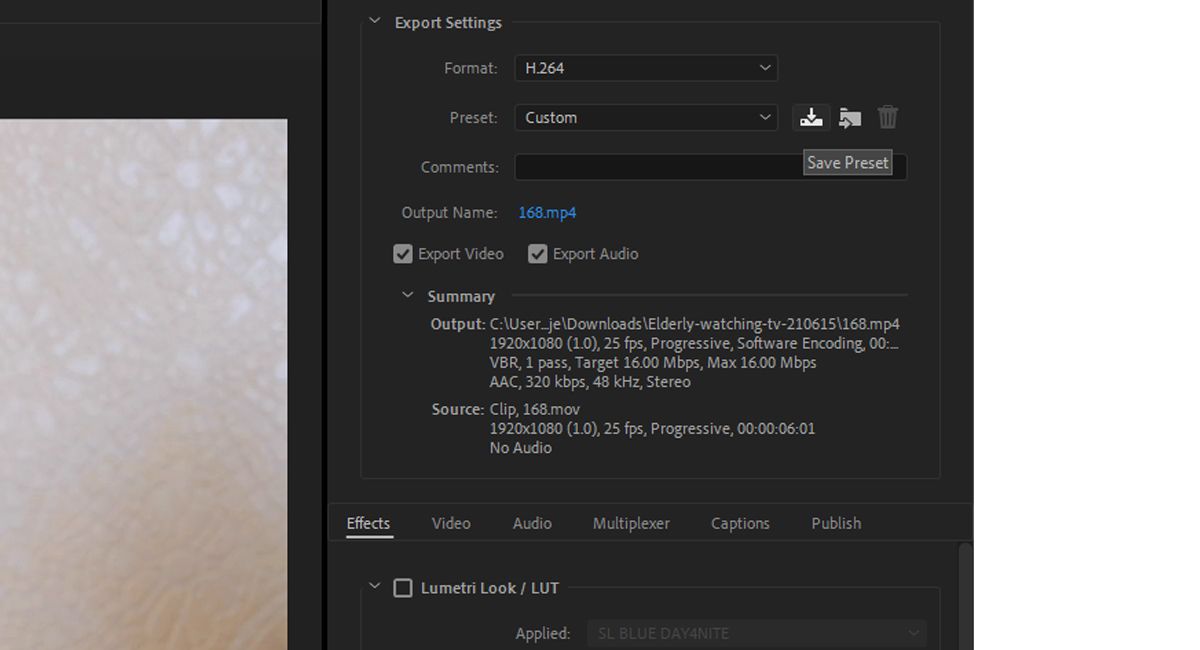
- Proper noun your preset.
- Ensure the Save Effects Settings checkbox is selected. Select OK when finished.
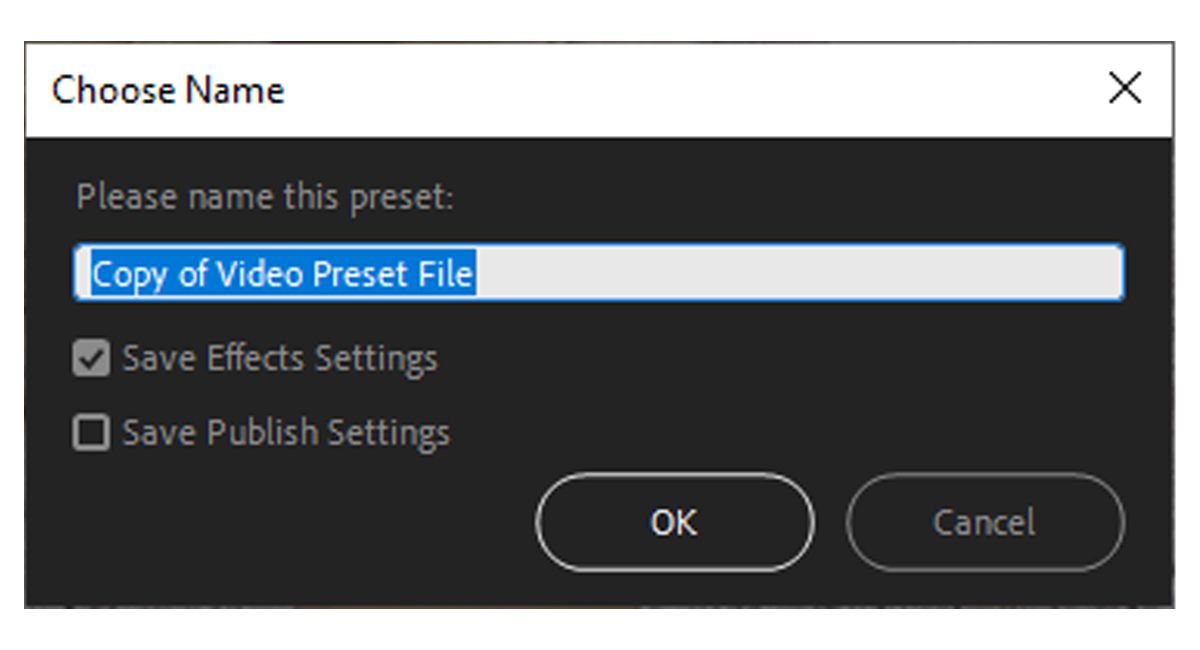
Getting Your Project Encoded and Uploaded
Adobe Creative Suite is built so that all the apps in the suite integrate and piece of work well together. Media Encoder is one of the best examples of Adobe'southward app integration working seamlessly with apps like Premier Pro and After Furnishings.
Taking full reward of these integrations is something to larn more about, particularly if you are looking to save time in your production procedure.
About The Author
Source: https://www.makeuseof.com/how-to-upload-videos-social-media-using-adobe-media-encoder/
0 Response to "How to Preset Information in Youtube Upload"
Post a Comment